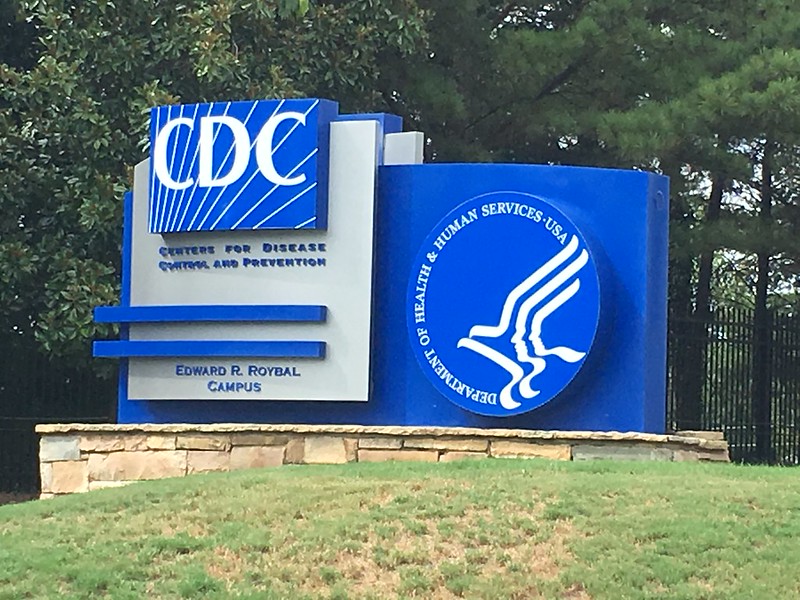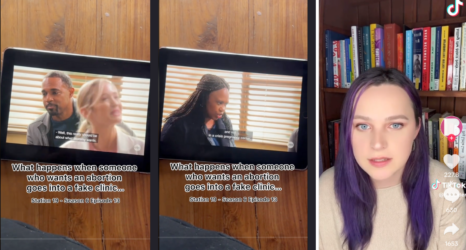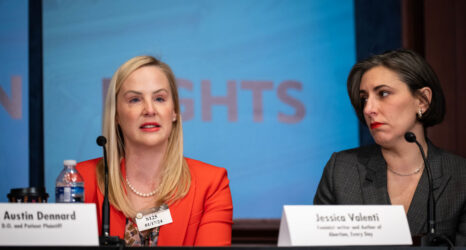For The Weekly Pulse (a revisit of an old Ms. column!), we’ve scoured the most trusted journalistic sources—and, of course, our Twitter feeds—to bring you this week’s most important news stories related to health and wellness.
In this edition: Pandemic updates as Trump’s unseemly politicking continues; what you should know about wildfires and the air; the repro rundown; and is that hope? Some much-needed pandemic positivity.
Pandemic Updates: Trump’s Unseemly Politicking Continues
+ A few weeks ago, the CDC’s website was updated to say those exposed to COVID-19 don’t necessarily need to be tested. The administration’s coronavirus testing czar, Adm. Brett P. Giroir, claimed the new guidance was a “CDC action” created with input from Dr. Robert R. Redfield, director of the CDC.

However, Giroir also confirmed the new guidelines originated from the White House coronavirus task force—adding to some public health experts’ fear the CDC is being politically pressured by Trump and his administration. This week, The New York Times provided more evidence the CDC’s new testing guidelines were written and uploaded by members of the White House’s coronavirus task force and Department of Health and Human Services (HHS)—despite objections from CDC scientists.
Additionally, HHS uploaded other documents to the CDC’s website—including one titled “The Importance of Reopening America’s Schools this Fall.” According to CDC officials interviewed on the condition of anonymity by The Times, documents uploaded by HHS conflict with the CDC’s neutral, scientific tone.
+ Trump and his administration are continuing to undermine public health experts on other fronts as well. During a town hall this week, Trump again floated the idea of waiting for herd immunity to kick in—although he (accidentally?) called it “herd mentality.” As Ms. has previously reported, scientists say a strategy of herd immunity via infection (rather than a vaccine) would result in two million lives lost.
+ On the vaccine front, CDC director Dr. Robert R. Redfield testified before a Senate committee on September 16. One of his most important pieces of testimony was his support for mask wearing as a crucial tool to ease the pandemic—perhaps even more important than a vaccine.
After hearing the comments, Trump called them “incorrect information” and claimed Dr. Redfield “made a mistake”—but Dr. Redfield later restated his support for masks in a series of tweets:
+ During the same testimony, Dr. Redfield said a vaccine wouldn’t be ready for the general population until mid 2021. This is in line with previous reporting that the CDC sent documents to states to prepare for vaccines to begin rolling out to prioritized populations—like health care workers—in early November.
But again, Trump claimed Dr. Redfield was “confused” about the vaccine timeline. Ultimately, it appears Trump is the confused one, as he claimed the vaccine will be ready “in a matter of weeks,” and suggested mass distribution will soon follow. Check out our recent article on vaccines to get the lowdown on a potential COVID-19 vaccine.
Wildfires and What You Should Know
+ The air quality in many parts of Oregon, Washington state and California ranks among the world’s worst following the onset of wildfires ravaging the West Coast. “It burns your chest,” remarks Deborah Stratton, a 54-year-old Oregonian. “It’s gotten thicker and thicker.”
+ With 78 million people in the western United States now confronting historic wildfires, researchers remind us of the issue’s severity—as wildfires’ toxic air is known to leave damage to health long after the fires die out and the smoke finally clears.
“This is the question that everybody is asking,” Dr. Perry Hystad, an associate professor in the College of Health and Human Sciences at Oregon State University, said. “‘I’ve been sitting in smoke for two weeks: How concerned should I be?’”
While studies are not yet able to examine the impacts of these specific fires, research from previous wildfires has found that people’s lung capacity and function sank below normal thresholds in the years following smoke inhalation.
So for now, if you see a haze, smell smoke or know of a wildfire in your area or a place you plan to visit, check the Air Quality Index to see whether you should be limiting your time outdoors.
Coronavirus Updates: Is That Hope?
It’s difficult these days to come across good news, so we searched high and low to give you (and honestly—ourselves) a break and report on a few positive stories.
+ A University of Bristol study conducted on 1000 teenage students in England found levels of anxiety decreased during remote learning. Of course, the study was relatively small and limited, but it does offer another perspective on the role of the classroom environment and social relationships—like bullying—in contributing to teens’ rates of anxiety.
+ Malone Mukwende, a medical student at St. George’s, University of London, published a handbook called “Mind the Gap” detailing the clinical signs and symptoms in Black and brown skin. Typically, medical students only learn how to diagnose skin conditions on white skin.
As Melina Tessier, MPH, wrote for Ms., “Using light skin as a standard for skin medicine can lead to deadly consequences for people of color.” Mukwende’s website includes the handbook and invites users to upload their own images and stories to be used as teaching tools. Hopefully, this is just the beginning for more inclusive medical school curriculums.
+ Eli Lilly, a pharmaceutical company, announced preliminary data showing hopeful results for its experimental antibody treatment. The study examined LY-CoV555, a SARS-CoV-2 neutralizing antibody, as a treatment for those with symptomatic COVID-19. According to the company’s chief scientific officer, “the results reinforce our conviction that neutralizing antibodies can help in the fight against COVID-19.”
Repro Rundown
+ On Monday, several advocacy groups filed a whistleblower complaint on behalf of a nurse from an Immigrations and Customs Enforcement (ICE) detention center.
The complaint documents “jarring medical neglect” within the center “including a refusal to test detainees for the novel coronavirus and an exorbitant rate of hysterectomies being performed on immigrant women.”
“Recently, a detained immigrant told Project South that she talked to five different women detained at ICDC between October and December 2019 who had a hysterectomy done,” CNN reports the complaint stated. “When she talked to them about the surgery, the women ‘reacted confused when explaining why they had one done.’ The woman told Project South that it was as though the women were ‘trying to tell themselves it’s going to be OK.’”
Read more:
+ As the COVID-19 pandemic has made it increasingly more difficult for individuals to access abortions, new research published in the Annals of Family Medicine suggests a link between lifting restrictions around mifepristone—medical abortion drug—and improving access to care. Researchers found that removing the drug’s prescription and dispensing restrictions in Canada greatly improved access to abortion services and inequalities in care.
+ To tackle the issue of Black and brown patients dying at significantly higher rates than their white counterparts during pregnancy and childbirth, the city of San Francisco is testing a novel approach in launching the Abundant Birth Project.
The pilot program would give around 150 low- and middle-income Black and Pacific Islander expectant parents $1,000 per month throughout their pregnancies and for at least six months after the birth, Mayor London Breed announced.
According to Dr. Zea Malawa, project leader from the San Francisco Department of Public Health:
“We’re trying to address the racism directly and instead of trying to change Black women—because there isn’t anything wrong with them—we’re trying to change the environment so it doesn’t have to be so stressful.”
+ Power to Decide has recently launched a new Abortion Finder search tool designed to provide up-to-date information about the availability of abortion care and services across the United States.

“Despite consistent efforts by abortion opponents to block access to abortion care and to create impossible obstacles abortion seekers cannot overcome, abortion care continues to be part of the full spectrum of reproductive health services available for women,” said Gillian Sealy, CEO of Power to Decide. “As such, the new Abortion Finder was designed to mitigate some of these challenges by helping people locate the nearest abortion clinic and access information to help them prepare for their appointment.”





